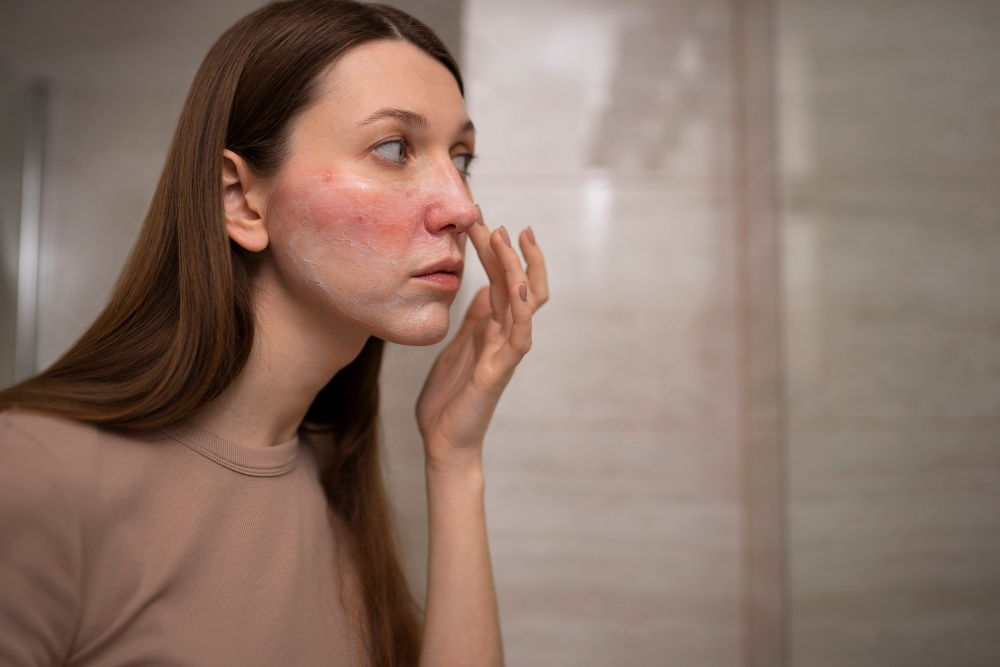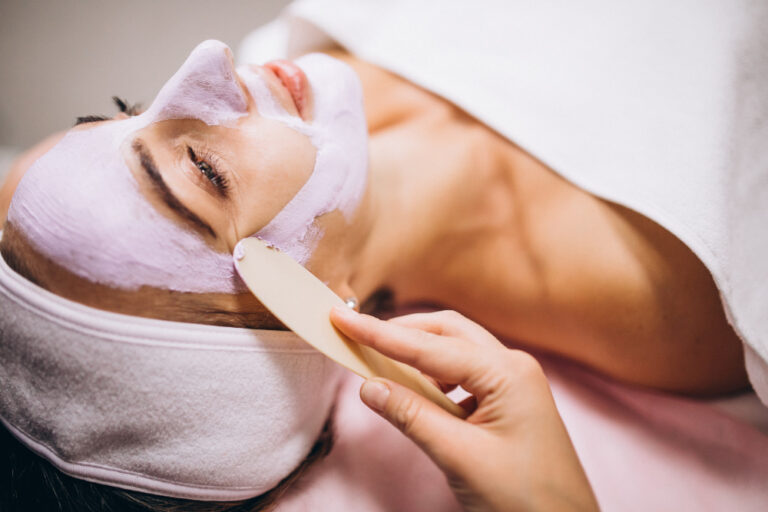Facial waxing can cause side effects such as pain, redness, irritation, rashes, temporary bumps, ingrown hairs, sun sensitivity, allergic reactions, and bleeding. Proper aftercare can help minimize these reactions.
Facial waxing is a popular method of hair removal that involves the application of warm wax to the skin. This wax adheres to the unwanted hair. As the wax cools and hardens, it tightly grasps each hair at its root. When the wax is swiftly peeled off, the trapped hair is pulled out from the root. While effective, facial waxing can cause side effects such as pain, redness, irritation, rashes, temporary bumps, ingrown hairs, sun sensitivity, allergic reactions, and bleeding. Understanding these potential reactions and knowing how to care for your skin can help you manage them effectively.
The Immediate side effects of Facial Waxing
Immediately after a facial waxing procedure, one typically experiences some common side effects. The most common ones include tenderness, redness, and minor swelling. These symptoms are generally temporary and should dissipate within a few hours to a few days, depending on an individual’s skin sensitivity.
Often, skin may feel warm or somewhat raw due to the sudden removal of hair directly from the follicle. It’s not uncommon to notice small bump-like reactions called folliculitis. It’s an inflammatory reaction to the hair follicle being disturbed and should also fade quickly.
It’s crucial to avoid sun exposure immediately after waxing since this can further irritate the skin or potentially cause hyperpigmentation. Using a cold compress on affected areas, can offer some relief. Similarly applying an over-the-counter cream with cortisone can help to calm inflammation.
In general, it all comes down to how well one knows their skin and its reactions. Remember, it’s always wise to consult with a trusted aesthetician prior to waxing for the first time. Always ensure to perform a test patch to assess skin’s reactions before proceeding with full-face waxing.
Skin Irritation and Redness from Facial Waxing

One of the notable aftereffects of facial waxing is skin irritation. It’s an expected outcome due to the nature of the procedure which involves tugging at the skin to remove hair from the roots. This hair removal technique, especially when performed in sensitive areas of the face can strip off a layer of skin, causing a rash-like irritation. Waxing can also cause mild to severe erythema (skin reddening), another form of skin inflammation that may appear like a sunburn in the waxed area.
Redness and irritation may vary depending on the individual’s skin type and the area of application. Typically, those with sensitive skin or conditions like rosacea might experience more severe redness. Furthermore, first-time waxers tend to experience more skin reactions due to the shock to the skin follicles, whereas regular waxers might experience minimal reactions over time as their skin adapts to the process.
Also noteworthy is the fact that these side effects are temporary and usually subside within a few hours to a few days. Over-the-counter solutions such as aloe vera gel and cold compresses can be used to soothe and calm the inflamed skin. A dermatologist should be consulted if symptoms persist beyond a few days or if the irritation becomes severe, as this could indicate an allergic reaction to the wax.
Pain and Discomfort Associated with Waxing
Waxing is undoubtedly a quick and effective method for hair removal, but it often comes with its share of discomfort. The immediate sensation during the waxing process is often described as a sharp sting, akin to ripping off a band-aid, but across a larger, more sensitive area of skin. Depending on the individual’s tolerance for pain and the sensitivity of the area being waxed, this discomfort can range from slight to severe. The type of wax used and the skillfulness of the professional administering the treatment can also play a pivotal role in dictating the overall comfort of the process.
After the waxing session, many people experience lingering soreness in the treated area. This is typically a reaction of the skin having just undergone a surprising amount of stress. It’s also worth noting that the sensation is more intense for newbies, though frequent waxers often report a decrease in pain levels over time. Using a mild, soothing skin salve or cream post-waxing can alleviate some of the discomfort.
Aside from the pain felt during and after the waxing process, there are other physical side effects that can increase discomfort. Redness and inflammation are quite common, as waxing does actually remove a layer of skin along with the hair. This leaves the skin underneath vulnerable, and hence, it needs proper care and attention to prevent further irritation and potential infection. Waxing shouldn’t be taken lightly and must include an appropriate aftercare routine for the treated areas.
FAQs
What exactly is facial waxing?
Facial waxing is a method of hair removal where warm wax is applied to the skin and then removed quickly to pull out hair from the root. This method is commonly used to remove unwanted hair from areas like the eyebrows, upper lip, cheeks, and chin.
What are the immediate side effects of facial waxing?
Immediately after facial waxing, it’s common to experience some redness, slight swelling, and discomfort in the waxed area. These are temporary and usually subside within a few hours. You may also notice that your skin feels a bit tender to the touch.
How long does skin irritation and redness last from facial waxing?
The duration of skin irritation and redness can vary depending on your skin type and sensitivity. For most people, these reactions fade within a few hours to a day. However, if you have sensitive skin, the redness and irritation might linger for a couple of days.
How painful is the waxing process?
The pain associated with waxing can vary from person to person and depends on factors such as your pain tolerance and the area being waxed. Some people describe it as a quick, sharp pain, while others compare it to a pinch. The discomfort generally lasts for a moment and then subsides.
Are there ways to minimize the pain and discomfort associated with waxing?
Yes, there are a few ways to help reduce waxing discomfort. Over-the-counter pain relievers taken about an hour before your appointment may help. Topical numbing creams can also be applied before the procedure. Additionally, regular waxing can make subsequent sessions less painful as your skin gets used to the process.

